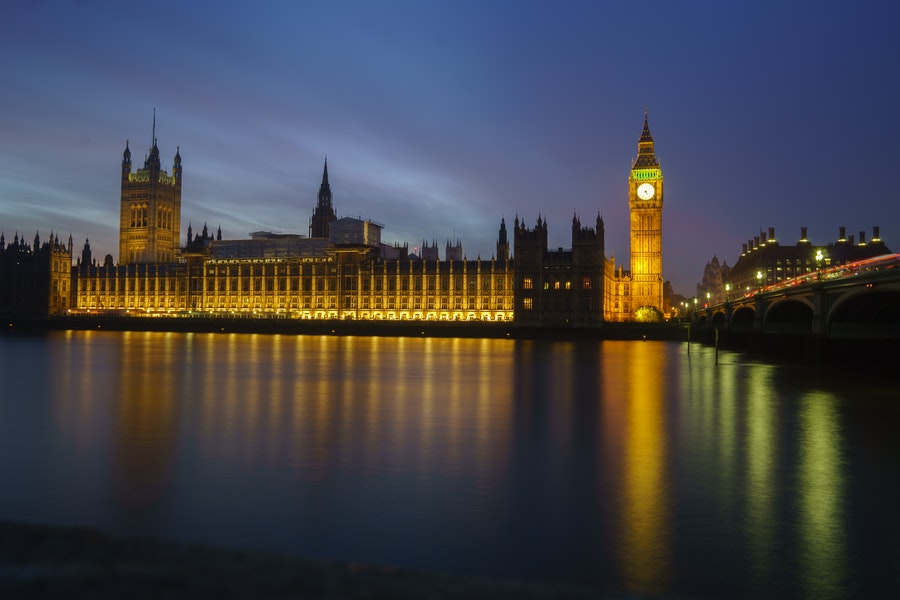
The climate crisis has been all over the news recently, and for a good reason – reducing our carbon emissions and tackling climate change is vital for the future of the Earth. Within this dire news, though, the phrase net zero has been continuously popping up. This relatively new aim is constantly being discussed, with the government promising to reduce emissions by 78% and reach net zero by 2050[i] to the NHS swearing to deliver a net zero service by 2045. But what is net zero? And why is it essential to reducing climate change? We have everything you need to know about net zero, including how you can help the nation and take a vital step towards saving our planet.
What is net zero?
Net zero is a target that countries around the world are aiming to hit.
Achieving net zero emissions would mean that the number of greenhouse gases going into the atmosphere becomes balanced by the amount removed. To get to net zero, we have to be adding no more greenhouse gases than are being taken out. If we achieve this, it would mean that the human race is no longer emitting any more greenhouse gases . Once emissions hit net zero, the effects of global warming are likely to reduce significantly. If we don’t tackle the problem soon, though, scientists say the consequences will be irreversible.
Why it is so important
Net zero is vital for the future of the Earth and all the living things that inhabit it.
Balancing the number of greenhouse gases we are releasing into the atmosphere will maintain the Earth’s temperature and potentially even lower it, meaning humans and animals can continue to thrive. The effects of climate change have already proven to be dire, but if we don’t start fighting it and the Earth continues to heat up, further consequences will include:
- Water shortages
- Difficulty growing food
- Certain countries becoming uninhabitable due to hot conditions or rising sea levels
- Extreme weather conditions
- Melting of polar ice caps
- Flooding of coastal areas
- Increased chances of wildfires
- Release of methane, a greenhouse gas, into the atmosphere as frozen ground melts
- Relocation or extinction of essential wildlife species
- Disappearance of coral reefs as oceans absorb CO2 and become more acidic
How the UK government is working towards net zero
The UK government was the first to enact legislation to help reach net zero in 2019, altering the long-term target from the Climate Change Act of 2008 to net zero by 2050.
The government introduced this act on guidance from the Climate Change Committee. This independent public body has emphasized how reaching net-zero is vital to meet the goals of the Paris Agreement. The Paris Agreement of 2016, is an international treaty on climate change, aiming to limit global warming to 1.5°C.
Alongside their edits to the Climate Change Act, the government are also employing the following to help reach net-zero:
- The UK Emission Trading Scheme – Replacing a similar scheme set up for the EU following the U.K.’s departure from the union, this mandatory program gives high-energy industries permits to emit greenhouse gases. Businesses can then trade these gases at market rate. The government introduced this scheme to encourage companies to lower their emissions and save money.
- A Fuel Duty Tax – A charge on the road fuel used by U.K. car drivers.
- Contracts for Difference – Contracts for Difference guarantee a fixed price for each unit of low-carbon power generation used in high power enterprises
- Energy Company Obligation – Large energy companies in Britain must boost the efficiency of homes, which consumers will pay for through their regular energy bills.
- Climate Change Levy – High polluters in the business sector pay the CCL on every unit of energy they use. If the user agrees to boost their efficiency through a climate change agreement, they can opt-out of CCLs.
Alongside the government’s goals, other sectors of the UK are setting their own aims to help reach net zero.
One hundred seventy-seven high-energy businesses pledged to set ambitious targets for emissions reduction during the High-Level Meeting of Caring for Climate[ii]
Many others are being vigorously encouraged to follow suit. Alongside this, the NHS is aiming to reach net-zero emissions within their company. By using more environmentally-friendly equipment, lessening travel to hospitals and surgeries, and encouraging individual staff members to lower their carbon footprint, the public service hope to do its bit to save the environment.
How you can help to hit net zero
Although large businesses have a huge part to play in reducing carbon emissions, there are certain things you can do to help the country hit its goal. To reach net zero as a nation, everyone must play a part, no matter how small and minor everyday changes can have a considerable impact. To start helping to save the planet, you can:
1) Talk about the climate
People are more likely to trust friends and family over anonymous experts or the internet, and sharing your passion for the planet will likely inspire similar emotions. Simply discussing climate change, global warming or net zero with your social circles could kickstart conversations between others, inspiring more significant concern, awareness and action. Climate change requires everyone to work together, so passing on the importance of helping to reach it could make a drastic difference.
2) Be more energy efficient
40% of U.K. emissions come from households[iii], but making smarter choices when choosing and using appliances could lower your contribution to this statistic. For example, opting for energy-efficient light bulbs and appliances and unplugging them when not in use are simple ways to run an energy-efficient household. In addition, being aware of your energy consumption, reducing water waste, switching off lights, and choosing sustainable ways of heating your home, such as our economical underfloor heating supplies, will lessen your carbon emissions and save you money on your bills. That’s a win-win situation.
Take a look at our top recommended energy-saving gadgets here
2) Use renewable energy
Switching to renewable energy via solar panels, wind turbines or hydropower, can make a huge difference. Since our primary energy supply comes from fossil fuels, a leading cause for carbon emissions, switching to a supplier that takes at least half of its power from renewable sources can significantly lessen climate change. Many utility companies provide other ways to support renewable sources on their websites or statements, so check these out for different ways to help fund renewable energy.
3) Choose an efficient vehicle
Petrol and diesel are both fossil fuels, which, when burned, contributing to carbon emissions. Choosing fuel-efficient vehicles, such as electric cars and hybrids, will be better for the environment. These eco-friendly choices will also save you money and fuel. Since completely switching vehicles isn’t possible for many of us, there are things you can do to cut your fuel consumption:
- Carshare
- Ensure your tyres are well inflated
- Walk or cycle
- Take public transport
- Work from home
- Keep your car regularly maintained
- Use the gas and brake pedals less
4) Cut down on your use of public transport
Planes, buses and cars are a leading source of air pollution and carbon emissions. If you can, walking or cycling are the best eco-friendly transportation options. They also offer multiple fruitful benefits for your mental and physical health. Limiting your air miles will also mean less climate pollution, so opting for trains where possible is best. Trains are one of the most eco-friendly ways of travelling because they are responsible for considerably fewer carbon emissions than the aviation industry.
5) Change your diet
The food we choose to eat and where we get it from can have a surprising effect on the environment. Chemical agriculture, livestock production and the distance food travels to supermarkets contribute a shocking amount to carbon emissions. If you buy these products, you are supporting this process. Simple things like eating less meat, buying local produce, cutting down on waste and growing your own food can make your diet eco-friendlier and help reduce climate change.
6) Encourage the government and large corporations to change
Of course, there’s only so much we can do from our homes. The big decisions and actions need to come from the big bosses. Getting politically active and encouraging the government and large corporations to reduce nationwide emissions is vital to reaching net zero. Voting for leaders who take climate change seriously and participating in public events are great ways to encourage change.
Let’s act before it’s too late
Scientists worldwide agree that global emissions need to be reduced by at least 45% by 2030 to stop severe and irreversible damage to our planet[iv]. Fifty-nine countries have already set goals to reach net zero[v], and now you know how you can help your nation reach them. So, let’s start saving the planet before it’s too late.
Other terms
Climate change
The climate of an area is the average weather of that place measured over a few years. Climate change is a shift in these average conditions, more often than not in a harmful way. This shift in weather conditions is caused by damaging human activities that raise the Earth’s temperature by releasing greenhouses gases into the atmosphere. Burning fossil fuels, deforestation, producing oil, letting organic waste decay and industrial processes are all offending human activities. Things like droughts, flooding, and forest fires are all examples of harmful climate change.
Greenhouse gases
Greenhouse gases are the natural gases in the Earth’s atmosphere that trap heat. Although sunlight can pass through them and into the atmosphere, they catch the warmth the sun radiates to help regulate the Earth’s temperature. Greenhouse gases are actually vital to the Earth’s survival because they make our planet warm enough for human life. However, we are producing too many greenhouse gases, which is warming the core temperature of the Earth and causing climate change.
The leading greenhouse gases are:
- Carbon dioxide
- Methane
- Water vapour
- Chlorofluorocarbons
- Ozone
- Nitrous oxide
Sources
[ii] https://sdg.iisd.org/news/177-companies-have-pledged-to-reach-net-zero-emissions-by-2050/
[iii] https://www.theccc.org.uk/wp-content/uploads/2016/07/5CB-Infographic-FINAL-.pdf
[iv] https://www.forbes.com/sites/ginaheeb/2021/02/26/the-world-has-to-cut-carbon-emissions-by-45-under-paris-agreement-but-is-only-on-track-for-a-less-than-1-decline/?sh=3f458f615324
[v] https://www.wri.org/events/2021/6/net-zero-targets-which-countries-have-them-and-how-they-stack#:~:text=To%20date%2C%2059%20countries%2C%20representing,the%20United%20States%20and%20China.


